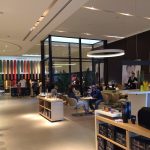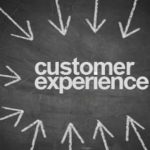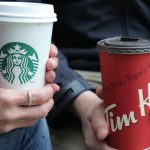Millennials don’t rely on serendipity when they shop. They research in advance to save time and to make sure their purchases are aligned with what they need and want. With the swish of a finger, they can instantly find out how something works, what the options are and how it stacks up against the competition. Time magazine says that, “by 2017 Millennials will have more buying power than any other generation. But so far, they're not spending like their parents did.”
The trick is to catch customers while they’re Googling. Millennials value relationships, experiences, new technologies and creativity. Engage them by teaching them something relevant to what they are searching. Millennials like to discover new things and are more likely to spend money on experiences than things. Get shoppers in the door by creating buzz online about store workshops, meet-ups, events, next level customer service, convenience or something they would consider ‘cool’.
The mobile experience should flow with them effortlessly across each device, and into the store. However, there should be something about going to the actual store that is more special. Some of the trends that appeal to Millennial shoppers are new technology, being dog friendly, minimal, organic and sustainable. Hosting events that people can bring a friend to are also more likely to be shared.
Big box stores like Costco don’t make much sense to a Millennial because they are less likely to own homes or cars. Boutiques, specialty stores and markets that offer in-store pick-up and delivery options are having more success.
Technology helps bridge the gap for a seamless online to offline shopping experience. By catching the customer at the right time you can create quality interactions that add value and interest to your store and products. Then, when a customer is finally ready to come into the store, make it more than just a place to shop. Make it a destination for a great experience and discovery.
Companies are thinking about the customers’ biggest annoyances and coming up with innovative ways to solve them. Sometimes that means thinking about making the right alliances. One example is the Australian supermarket, Woolworths. They created an app that allows you to shop from your phone while you’re traveling and schedule to pick up your groceries when you step off of the plane at the airport.
Starbucks is also using apps to give Millennials the near instant gratification they crave. The delivery feature of its loyalty app, will soon allow customers not only to order and pay within the app, but have beverages delivered to their location.
Stores that zero in on pain points to create a simpler, faster shopping experience are having more success. Millennials prefer self-help options that allow them to quickly resolve their own problems. However, there is nothing more frustrating than walking up and down isles and not being able to find anyone to help when you really need it.
Retailers are addressing this and providing a more engaging and memorable in-store experience, by hiring experience managers. They are customer service aficionados that optimize shopper’s browsing and buying time. A helpful experience has potential to create an emotional connection and turn a browsing experience into a purchase. They work hard to build relationships and adapt new technologies to help create the best in-store experience possible for the customers.
Beacon technology helps to get the right message, to the right person, at the right time. Millennials can see a hard sell from a mile away and don’t want to be bothered about a shoe sale while they’re relaxing at home. However, they definitely would appreciate it as they walk into the mall.
The Urban Outfitters native app, Urban On, works with beacon technology to personalize shopping visits and offer those discounts that Millennial shoppers love so much. Shoppers are encouraged to share outfits with friends on social media to earn loyalty points. Then, it senses when they are standing in the checkout line and sends out a notification to pull out their phone reminding them to cash in their loyalty points.
CloudTags technology solutions are another way stores are raising the bar. They seamlessly connect the on-line store with in-store for an optimized shopping experience. Customers are offered a tablet when they come in to shop and can tap on special product tags for more information. It also makes products in their online wish lists easy to locate in the store. Built in Bluetooth technology tracks where shoppers are in the store and for how long they are looking at an item in order to zero-in on what they need. That way the store is able to tailor the shopper’s experience through new insights about that customer’s intent and browsing behavior, as well as continue that relationship after they leave.
Some Crate and Barrel stores have no retail items on the floor at all. Everything is staged for a realistic atmosphere that the customer shops with a tablet, scanning Cloud Tags to put things in their “cart.” This makes carrying around heavy items a thing of the past. Then, after shopping, they just go to the back counter to pick up their purchases which have already been boxed up into a nice convenient package.
Rebecca Minkoff’s “connected store” in New York is another excellent example of how brands can use innovations in technology to connect with Millennial shoppers. Their flagship store in New York has a new connected wall and interactive fitting room. It shows how the clothes look on the runway, then lets customers request the items to the fitting room. Once inside the changing room, they can scan clothing tags to receive complementary recommendations, contact a member of staff and check out through a mobile device.
“The new definition of luxury is being able to be empowered to select the service level that she wants, when she wants, on the device that she wants.” —Emily Culp, SVP of Omnichannel and E-Commerce for Rebecca Minkoff.
Since Millennials don’t respond well to a hard sell, workshops are a way to appeal to their DIY sensibilities, meet people that share their interests and learn new things. It’s not just the people in the workshops creating buzz, it’s the people passing by that want to come in and want to see what it’s all about.
Anthropologie enriches the shopping experience with educational workshops, pop up fashion shows and dog adoptions, classes in jewelry making and DIY tutorials. Anything that their customers might find interesting and is in-line with their brand.
Whole Foods takes a grocery trip and turns it into an experience by offering new recipe samples, and a chance to learn something new with cooking classes.
Tribe is a company that makes nutrition bars and they opened a store specifically for runners. They host running groups, yoga and nutrition classes to engage their audience.
“Having activity in-store is really important for creating the right atmosphere. If you do it well people are drawn to it and want to be part it, which ultimately leads to sales later down the line. Hosting classes and talks in-store were a way for us to live our brand and quickly show people what we’re about.” – co-founder TRIBE, Rob Martineau
Sephora noticed that contouring was trending in the beauty world, and turned it into an opportunity where education could drive sales. People are more likely to buy something if they know how to do it. So, Sephora set up contouring stations in their stores that let the customer sit down with exactly what they needed to learn how to do it in the store.
“People were sitting on the sidelines, watching other people’s contouring videos, not knowing how to do it themselves,” said Sephora president and CEO Calvin McDonald.
These are just some the ways different stores are coming up with good in-store experiences will attract the Millennial shoppers. It’s what retail marketing has become when you seek this emerging generation. You can adapt their thinking into how you approach your own in-store experiences or use this as a jumping off point to get you thinking differently. I’d love to hear what has worked for you. Or, if you need help brainstorming your next in-store experience, we’d be happy to help. You can also check out previous posts on using personalization to attract Millennial shoppers, what kind of messaging to use or how to create strategies for attracting Millennial shoppers.
Sarah Knight – Observer, writer and Millennial shopper.






